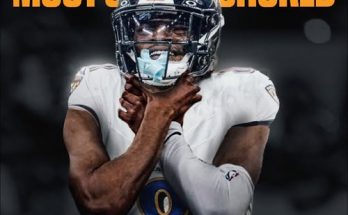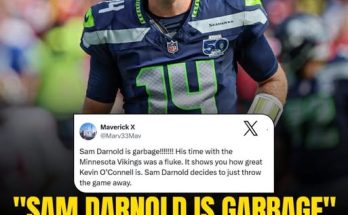In the ever-evolving landscape of the NBA, where dynasties rise and fall, and new contenders emerge with each passing season, a truly captivating parallel has been drawn by one of the game’s most insightful and decorated veterans. Paul Pierce, the legendary “Truth” and a key architect of the 2008 Boston Celtics championship team, has offered a bold comparison that resonates deeply within the basketball world: he sees the current Oklahoma City Thunder squad as strikingly similar to his iconic Celtics. This isn’t just a casual observation; it’s a profound statement from a player who knows what it takes to climb to the pinnacle of the sport, and it speaks volumes about the Thunder’s potential to carve out their own place in NBA history.
The 2008 Boston Celtics were a revelation. After years of mediocrity and a dramatic rebuild, the team acquired future Hall of Famers Kevin Garnett and Ray Allen to pair with Pierce, forming a “Big Three” that instantly transformed the franchise. What followed was a remarkable season of defensive tenacity, unselfish play, and an undeniable chemistry that propelled them to an NBA championship. That team wasn’t just talented; it was tough, gritty, and fiercely competitive, embodying a collective will to win that transcended individual brilliance. Doc Rivers, their head coach, instilled a defensive identity that suffocated opponents, and the veteran leadership of Garnett, Allen, and Pierce provided the mental fortitude needed to navigate the pressures of a championship run. They led the league in defensive rating and stifled opposing offenses with their relentless effort and disciplined approach. Their journey wasn’t without its challenges, as they faced tough seven-game series in the early rounds of the playoffs, demonstrating their resilience and ability to overcome adversity. The memory of that team, and its hard-nosed, team-first approach, remains a benchmark for aspiring contenders.
Fast forward to the present, and the Oklahoma City Thunder have rapidly ascended to become one of the most exciting and formidable teams in the league. Led by the mesmerizing talent of Shai Gilgeous-Alexander, who has firmly established himself as an MVP candidate, the Thunder boast an incredibly young yet remarkably mature core. Chet Holmgren, the towering and versatile center, provides elite rim protection and shooting, while Jalen Williams has emerged as a dynamic two-way wing with exceptional scoring and playmaking abilities. Complementing this trio are players like Luguentz Dort, a tenacious perimeter defender, and Cason Wallace, a promising young guard who brings defensive intensity and composure. The Thunder finished the 2024-25 NBA season with an astonishing 68-14 record, clinching the best record in the NBA for the first time in franchise history, a remarkable achievement that underscores their rapid development and dominance. They topped the Western Conference and secured home-court advantage throughout the entire playoffs, a testament to their regular-season consistency and excellence.
The similarities between these two seemingly disparate teams, separated by over a decade, are striking and are what likely fueled Pierce’s bold comparison. The most immediate parallel lies in their defensive prowess. The 2008 Celtics were renowned for their suffocating defense, anchored by Kevin Garnett’s Defensive Player of the Year performance and the collective commitment of the entire roster. Similarly, the current Thunder team has built its foundation on defensive principles, showcasing an elite ability to disrupt passing lanes, contest shots, and generate turnovers. Their length, athleticism, and disciplined rotations make them a nightmare for opposing offenses. They finished the 2024-25 season as the league’s top defensive team, allowing a mere 107.6 points per game and boasting a league-best 107.5 defensive rating. This defensive intensity is a shared characteristic that defines both squads and is a critical component of championship contention.
Beyond defense, both teams exhibit a profound sense of selflessness and a collective understanding of their roles. The 2008 Celtics, despite having three Hall of Fame talents, played an unselfish brand of basketball, prioritizing ball movement and collective success over individual statistics. Rajon Rondo, the young point guard, brilliantly orchestrated their offense and displayed a maturity beyond his years. The Thunder, likewise, play with a remarkable cohesiveness, sharing the ball, making the extra pass, and supporting each other on both ends of the floor. Shai Gilgeous-Alexander, while undoubtedly their offensive engine, plays within the flow of the game, empowering his teammates and trusting their abilities. Jalen Williams’s emergence as a secondary playmaker and scorer, and Chet Holmgren’s ability to stretch the floor and protect the paint, further enhance their collective offensive versatility. The unselfish nature of their star players and the willingness of role players to embrace their specific assignments create a synergistic effect, much like the 2008 Celtics.
Another compelling aspect of Pierce’s comparison lies in the leadership and maturity displayed by the young Thunder squad. While the 2008 Celtics benefited from the seasoned leadership of veterans like Pierce, Garnett, and Allen, the Thunder’s young core, particularly Gilgeous-Alexander, Holmgren, and Williams, has demonstrated an astonishing level of poise and leadership despite their relative youth. Gilgeous-Alexander’s calm demeanor in clutch situations and his ability to consistently deliver under pressure are reminiscent of Pierce’s own “Truth” moments. Holmgren’s defensive anchor and Williams’s burgeoning offensive game provide a strong supporting cast that exudes confidence and composure. They do not appear to be intimidated by the magnitude of their success, a characteristic often found in championship-caliber teams. Their coach, Mark Daigneault, has fostered an environment of continuous learning and growth, allowing these young stars to flourish and take on significant responsibilities.
Furthermore, both teams exhibit a remarkable balance of talent and depth. The 2008 Celtics had a strong supporting cast around their “Big Three,” including reliable contributors like Kendrick Perkins, James Posey, Tony Allen, and Eddie House, all of whom played crucial roles in their championship run. Similarly, the Thunder have assembled a well-rounded roster that goes beyond their primary stars. Players like Luguentz Dort provide defensive grit and timely scoring, while others contribute in various ways, demonstrating the meticulous roster construction by General Manager Sam Presti. This depth allows them to withstand injuries, maintain consistency, and adapt to different matchups throughout a grueling season and playoff run.
Of course, no comparison is perfect. The 2008 Celtics were built around a veteran core that had experienced significant individual success before coming together, bringing a wealth of collective wisdom and championship aspirations. The Thunder, conversely, are largely growing together, learning on the fly, and navigating the pressures of contention for the first time as a collective unit. This youth, while exciting, can also present challenges in high-stakes playoff scenarios where experience often plays a significant role. However, it also means that the Thunder’s potential ceiling is incredibly high, and they have many years of development ahead of them.
Paul Pierce’s comparison of the Oklahoma City Thunder to his 2008 Celtics is a powerful endorsement. It’s not just a compliment; it’s a recognition of shared qualities that transcend mere statistics and highlight the deeper ingredients of a championship team. The Thunder’s defensive prowess, unselfish play, and the emerging leadership of their young stars evoke memories of that iconic Celtics squad. As the Thunder continue their pursuit of an NBA championship, Pierce’s words serve as a compelling narrative, suggesting that this young and exciting team possesses the fundamental characteristics required to etch their own glorious chapter in the annals of basketball history, much like his beloved 2008 Boston Celtics.



